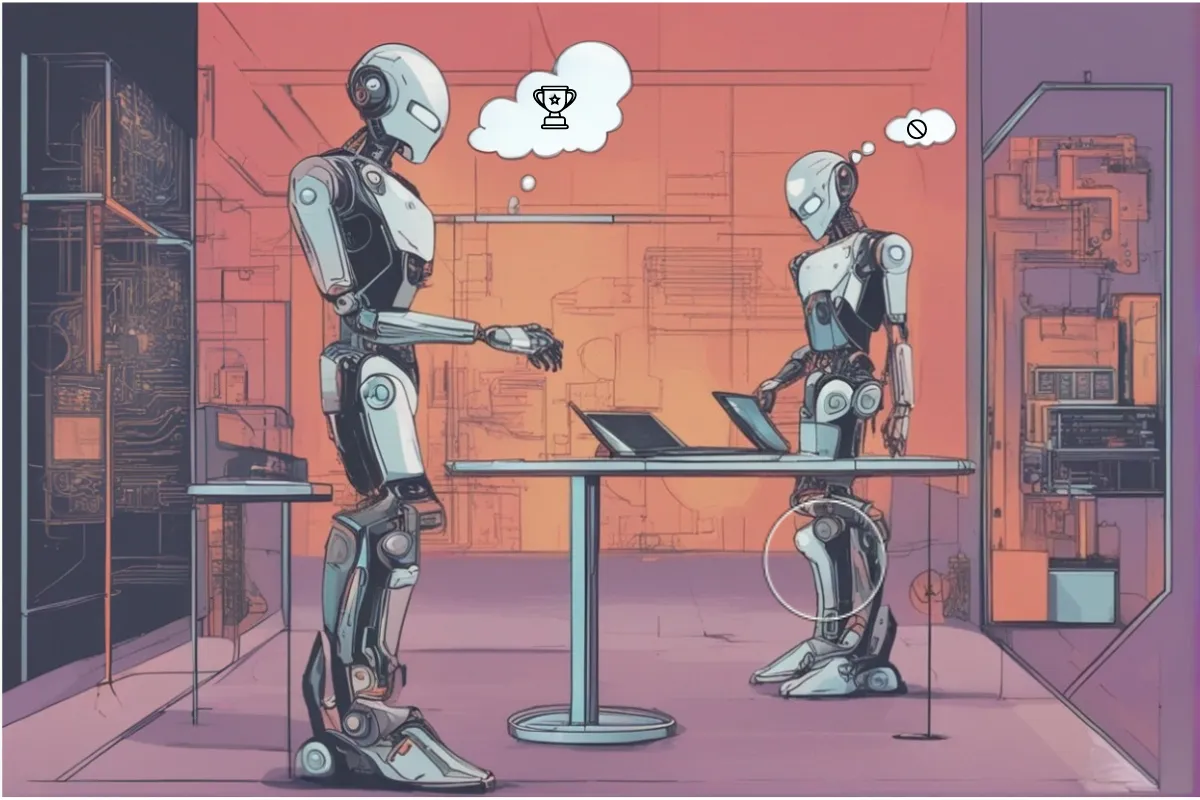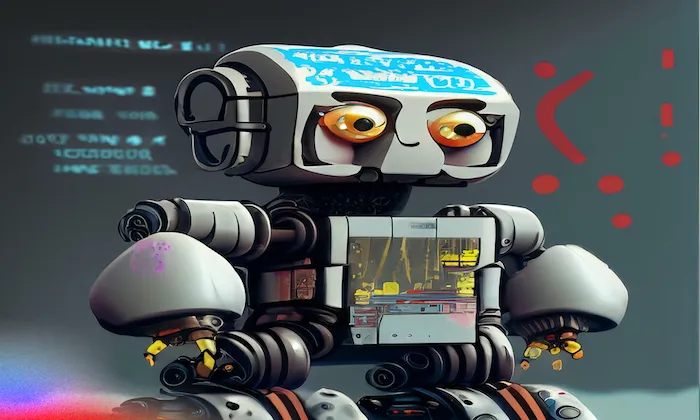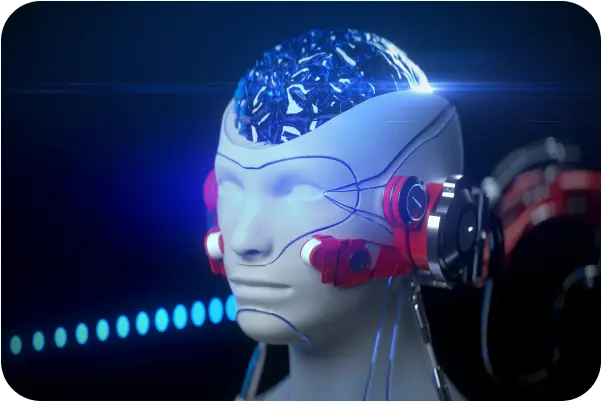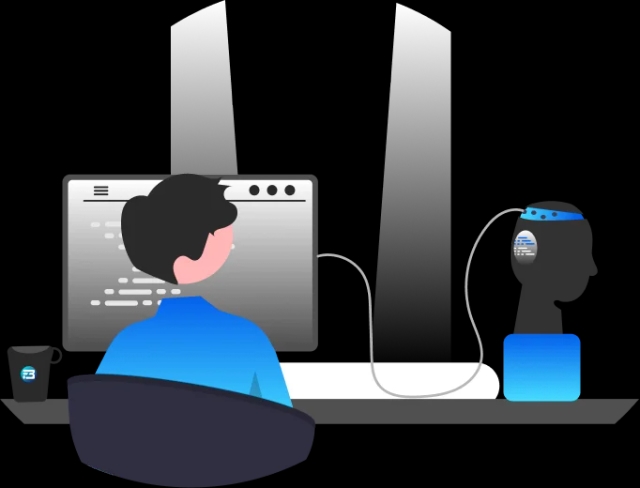We are all in the extraordinary world of AI models, where machines perform tasks once exclusive to human intelligence with seemingly magical capabilities. From speech recognition to image processing, they leave us in awe of their efficiency and ingenuity. But have you ever wondered how they work their magic behind the scenes?
In our AI-driven world, these models are gaining human-level intelligence and revolutionizing tasks that were once human-only territory. From speech recognition and natural language processing to generative AI, the potential seems limitless, and new models emerge daily.
We rely on these models for complex and essential tasks in our daily lives, from transcribing and translating meetings to exploring critical topics and generating creative content. But how do they achieve such accuracy and reliability? While high-quality training data and supervised learning play a part, there's another crucial element: Reinforcement learning.
In this blog, we'll delve into the concept of Reinforcement learning, and understand why it's a vital ingredient in enabling these models to deliver the most reasonable and accurate outputs. Let's begin!
Where’s the Gap?
AI models are trained using various methods, but typically they are trained with supervised learning. In this approach, the model learns from labeled data, where it's given input along with corresponding target labels or outputs.
For example, a large language model like ChatGPT is trained and fine-tuned on specific prompts and their accurate responses to learn from the labeled dataset. The aim is for the model to understand the relationship between inputs and outputs, so it can predict correct responses for new, unseen inputs.
In supervised learning, the model's understanding is limited by the scope of its training data. It can only handle scenarios it was trained on using the labeled data. However, obtaining high-quality training data in large quantities can be a complex, time-consuming, and costly process.
The gap in supervised learning can be explained by several arguments.
Limits the Diversity
With supervised learning, we train models
using the best available data. However, incorporating diverse examples into the training data to create an
all-encompassing dataset can be challenging.
For instance, when training a question-answering language model solely through supervised learning, we push the model to reproduce the same type and format of answers found in the training data. This approach has limitations because language is diverse, and questions can have multiple valid answers, which might be better than those provided in the training data. Unfortunately, the model is penalized if it attempts to generate different responses.
It's like writing an essay after being trained by your teacher and being punished for exploring a different writing approach, even if it could be an improvement. This restricts the model's learning potential and hampers its ability to explore new possibilities, similar to how it happens with AI models.
As a consequence, the model may resort to memorizing the details from the training data, leading to overfitting. With supervised learning, we lack the means to check the model's output, assess its quality, and provide feedback on whether the output is good or bad.
Lacks Training on “What’s wrong”
During supervised learning, we
train the model solely on what is deemed correct. For instance, in our language model (LLM) example, we
provide the model with prompts and their correct responses, and it learns to produce output based on this
information.
However, this process heavily relies on the trainer. The person training the model might unintentionally or intentionally include certain biases or critical information in the training dataset, which can affect the model's ability to generate its best answers.
In the training data, we only teach the model what is considered correct, without explicitly indicating what is incorrect. Many researchers and formal studies suggest that negative feedback is a potent tool for learning. Providing the model with examples of bad output and instructing it not to repeat those mistakes can be an effective way to improve the model's training.
May Lead to Hallucinate
When it comes to AI models, there are
two possibilities. Firstly, the model may already know how to tackle a problem because it was trained on
similar situations. Alternatively, the model may be unfamiliar with the issue and unsure how to produce an
output.
In the case of a language model like LLM, if it already knows the answer, it can respond accurately based on its training. However, when it doesn't know the answer, supervised learning forces the model to generate a response anyway.
This forced response can lead to two issues. Firstly, the model may memorize answers, resulting in overfitting and reduced effectiveness. Secondly, it might produce false or deceptive answers, which is also known as hallucination, since there is no mechanism to prevent this.
To address the limitations of supervised learning, which relies heavily on training data and lacks creativity, we need to introduce a new element in the model training process. This element should allow for exposure to negative examples, encouraging the model to learn from what is wrong in addition to what is right. Also, instead of forcing the model to provide fake answers when uncertain, it should be able to admit when it doesn't know the answer.
In the next section, we'll delve into reinforcement learning and explore how it can effectively deal with these challenges, providing a more robust and adaptive training approach for AI models.
What is Reinforcement Learning?
Reinforcement Learning (RL) is a type of machine learning where an agent learns to make decisions by interacting with an environment to achieve a specific goal or maximize a cumulative reward. Unlike supervised learning, where labeled examples are provided for learning, or unsupervised learning, which identifies patterns without guidance, RL relies on trial and error and feedback from the environment.
To grasp the concept better, consider teaching a dog to perform tricks. You want the dog to learn to "sit" when you say "sit." Initially, the dog doesn't understand the command and will try different actions. When the dog successfully sits upon hearing "sit," you reward it with a treat. If it doesn't sit, there's no reward. With time, the dog associates sitting with receiving treats and learns to sit upon your command. This is akin to the process of reinforcement learning.
Now, let's explore some components of the RL process in more detail.
Components of Reinforcement Learning
In reinforcement learning, there are several key components that form the foundation of the approach. These components work together to enable the model to learn and improve its performance over time.
Agent:
The entity that learns and makes decisions in the
environment. It can be a computer program, a robot, or any system capable of taking action.
Environment:
The external world or the problem space in which
the agent operates. It contains all the states, actions, and rewards that the agent interacts with.
State:
A specific configuration or situation within the
environment at any given time. The state represents the current context of the agent, providing information
about the environment's current condition.
Action:
The set of possible moves or decisions that the agent
can take in a given state. The agent selects actions based on its learned policy.
Reward:
A scalar value that represents the immediate feedback
provided to the agent after it takes a particular action in a given state. The reward is used to indicate
the desirability of the agent's action and serves as a measure of how well it is performing in the
environment.
Policy:
A strategy or a mapping from states to actions that the
agent follows to make decisions. The policy is the core of the agent's learning, and its ultimate goal is to
find an optimal policy that maximizes the cumulative reward over time.
Now as we know the components of reinforcement learning, let’s understand the process as well on who reinforcement learning actually works!
How Reinforcement Learning Works?
Let's delve into the process of reinforcement learning and its key elements with dog training example to understand it better. In a nutshell, the RL process can be outlined as follows:
Initialization:
The RL process begins with initializing the
agent's policy, value function, and other necessary parameters. The policy is the strategy that maps states
to actions, guiding the agent's decision-making.
At the beginning of the training, the dog doesn't know how to fetch a ball, and its policy (strategy) is random.
Observation and State:
The agent interacts with the environment
and observes its current state. The state contains all relevant information that the agent needs to make
decisions.
The agent (dog) observes the environment, which includes the presence of the ball, the distance to the ball, and its position relative to the dog. This information forms the current state of the environment.
Action:
Based on the observed state, the agent takes an action
according to its current policy. The action is the decision the agent makes in response to the state.
Based on the observed state, the dog takes an action (a) from the set of possible actions. In this case, the actions might be "move towards the ball," "pick up the ball," and "bring the ball back."
Interaction with Environment:
The agent's action leads to
changes in the environment. The environment provides feedback in the form of a reward to the agent.
The dog's chosen action leads to changes in the environment. If the dog moves towards the ball, its position changes relative to the ball.
Reward:
The reward is a scalar value that indicates how well the
agent performed the action in the given state. It serves as feedback to the agent, reinforcing or
discouraging certain actions.
After taking the action, the dog receives a reward from the environment as feedback. The reward could be positive if the dog successfully picks up the ball, negative if it fails, or neutral if it hasn't achieved the task yet.
Learning and Update:
The agent updates its policy, value
function, or other internal representations based on the observed reward and the consequences of its action.
The goal is to improve the agent's decision-making ability over time.
The dog updates its internal policy based on the received reward and its previous experiences. It learns to associate certain actions with positive rewards and avoids actions with negative rewards.
Exploration vs. Exploitation:
During the learning process, the
agent faces the exploration-exploitation trade-off. It must explore new actions to gather information about
the environment while exploiting its current knowledge to make actions that are expected to yield higher
rewards.
During the learning process, the dog may try different actions to explore the best strategy for fetching the ball. However, as it gains more experience, it starts exploiting the actions that have led to positive rewards in the past.
Policy Improvement:
The agent iteratively improves its policy
based on the received rewards and updated value estimates. It learns to make better decisions in different
states to maximize cumulative rewards.
Through repeated interactions and learning, the dog fine-tunes its policy. It starts to prefer actions that have consistently yielded positive rewards in similar situations.
Convergence:
The learning process continues through multiple
interactions with the environment until the agent's policy converges to an optimal or near-optimal strategy.
The agent becomes proficient in maximizing rewards.
The dog continues to interact with the environment and update its policy until it converges to an optimal or near-optimal strategy for fetching the ball.
Optimal Policy:
After convergence, the agent has learned an
optimal policy that guides it to take the best actions in each state to achieve its goal or maximize
cumulative rewards.
After sufficient training, the dog has learned an optimal policy for fetching the ball. When presented with a situation involving a ball, the dog takes actions that maximize its chances of successfully fetching the ball and receiving a positive reward.
As the training sessions progress, the dog tries different actions when confronted with the ball. Initially, it might run towards the ball without picking it up or try to pick it up but not bring it back. However, occasionally, the dog successfully picks up the ball and brings it back to you.
Whenever the dog brings the ball back successfully, you enthusiastically praise and reward it with a treat. This positive reinforcement encourages the dog to associate the actions of picking up and bringing the ball back with receiving treats. Gradually, the dog learns that bringing the ball back results in rewards, while other actions do not.
As the dog continues to interact with the ball, it updates its policy and becomes more adept at fetching the ball. Over time, it learns to consistently pick up the ball and bring it back to you, achieving the goal of fetching the ball successfully.
Through this RL process of observing, taking actions, receiving rewards, and learning from experiences, the dog learns a behavior (fetching the ball) that optimizes rewards (treats) and achieves the desired goal.
One fascinating aspect of this entire process is the balance between Exploration and Exploitation. Let's delve deeper into this concept.
Exploration and Exploitation in Reinforcement Learning
Exploration and exploitation are two fundamental concepts in Reinforcement Learning (RL) that deal with the agent's behavior when interacting with the environment. Striking the right balance between these two strategies is crucial for efficient learning and maximizing cumulative rewards.
Exploration
In the exploration phase, the agent tries out new or
unfamiliar actions to gather information about the environment. It aims to discover potentially better
actions and states that could lead to higher rewards. Exploration is essential, especially in the early
stages of learning when the agent's knowledge about the environment is limited.
Without exploration, the agent might get stuck in a suboptimal policy, never discovering better strategies for achieving its goals. By exploring different actions and states, the agent can learn from its mistakes and refine its policy over time.
Exploitation
In the exploitation phase, the agent exploits its
current knowledge and chooses actions that have resulted in high rewards in the past or are expected to
yield better outcomes based on its learned policy. Exploitation is about maximizing immediate rewards based
on what the agent already knows.
Exploitation is essential for the agent to apply what it has learned so far and take actions that are likely to lead to high rewards. Once the agent has gained sufficient knowledge, it can leverage that knowledge to make more informed decisions.
Balancing Exploration and Exploitation
Finding the right balance
between exploration and exploitation is a fundamental challenge in RL. In the early stages of learning, when
the agent's knowledge is limited, it is important to explore to discover the environment's dynamics and
potential high-reward actions. As the agent gains experience and builds a more accurate model of the
environment, it shifts towards exploitation to capitalize on the learned knowledge and focus on actions that
are likely to yield higher rewards.
Trade-off between Exploration and Exploitation in Reinforcement
Learning
There is a trade-off between exploration (trying new actions) and exploitation (choosing
actions with the highest expected rewards). Too much exploration may delay the agent's convergence to an
optimal policy, while too much exploitation may result in the agent getting stuck in a suboptimal policy and
failing to discover better strategies. The agent must continually balance these strategies throughout the
learning process to achieve the best possible outcome.
Reinforcement Learning Filling the Gap
Now, let's delve into how reinforcement learning overcomes the limitations we discussed in the previous section, "Where's the Gap."
Reinforcement learning liberates models from merely mimicking provided training data. In the case of large language models (LLMs), they have the freedom to explore creative and interesting ways to generate answers.
Even if these LLM models attempt to hallucinate and come up with made-up answers, they will receive fewer rewards, discouraging them from repeating such behavior. By applying negative rewards, reinforcement learning opens the door to more advanced learning, surpassing the constraints of supervised learning, which solely focuses on correct outputs. This approach allows the models to develop a deeper understanding of the tasks they're performing and encourages more adaptive and sophisticated responses.
How Human Feedback (HF) Supports Reinforcement Learning (RL)
Reinforcement learning does offer solutions to some of the limitations posed by supervised learning. However, it also has its own set of limitations. It's essential to explore these drawbacks and discover how combining human feedback with traditional reinforcement learning can help overcome them.
RL agents learn by interacting with the environment and receiving feedback in the form of rewards or penalties. In complex environments or with large state and action spaces, the RL agent might need a vast number of interactions (episodes) to explore different states and actions thoroughly. This high sample complexity can make RL training computationally expensive and time-consuming.
RLHF Solution:
Reinforcement learning with human feedback reduces the sample complexity by
incorporating human demonstrations or feedback. Instead of relying solely on trial-and-error exploration,
the agent starts with demonstrations of desired behavior or receives feedback from human evaluators. These
demonstrations provide valuable guidance, allowing the agent to bootstrap its learning process and converge
to an effective policy faster.
RL involves a fundamental trade-off between exploration (trying new actions) and exploitation (choosing actions with the highest expected rewards). Striking the right balance is challenging, as excessive exploration can lead to slow learning, while premature exploitation can result in suboptimal policies.
RLHF Solution:
Reinforcement learning with human feedback can
mitigate the exploration-exploitation trade-off by providing demonstrations of desirable actions. These
demonstrations offer valuable information about good actions in different states, reducing the need for
extensive exploration. The agent can leverage these demonstrations to guide its early policy updates,
achieving a more efficient exploration process.
In some environments, obtaining meaningful rewards can be challenging. Positive rewards might be sparse and only available after several steps or interactions, making it difficult for the agent to learn effectively.
RLHF Solution:
Reinforcement learning with human feedback
(RLHF) can provide more informative and dense rewards through human feedback. Human evaluators can assess
the agent's behavior and provide immediate feedback, indicating whether the actions were correct or not.
This dense reward signal helps the agent update its policy more quickly and effectively, leading to faster
learning.
In RL, agents might explore actions that have adverse consequences in the real world, leading to safety and ethical concerns. Incorrectly learned policies or poorly designed reward functions could result in harmful actions or unintended behavior.
RLHF Solution:
Reinforcement learning with human feedback with
human oversight can address safety and ethical concerns. Human evaluators can review the agent's behavior
and provide corrective feedback when necessary. This supervision helps ensure that the agent does not engage
in harmful or unsafe actions, making RLHF a more reliable approach in sensitive real-world applications.
Reinforcement Learning from Human Feedback (RLHF) leverages human demonstrations and feedback to address the limitations of traditional Reinforcement Learning. Overall, RLHF is a promising paradigm that combines the strengths of both RL and human expertise to accelerate learning and make RL more practical and aligned with human preferences and safety concerns.
Conclusion
I hope you found this comprehensive post on reinforcement learning informative and gained a solid understanding of its fundamental concept. When it comes to working on complex technologies like generative AI and building multidimensional models such as large language models, having a substantial amount of training data and human input is essential to ensure the development of robust, safe, and ethical AI models.
At FutureBeeAI, we are here to provide you with end-to-end support for all types of training datasets, including text, prompt-response, speech, image, video, and more. Our diverse and trained crowd community from around the world is ready to assist you with reinforcement learning through human feedback, transcription, annotation, or any other tasks related to human-in-the-loop.
If you're looking to scale your AI training process, don't hesitate to get in touch with us today. We offer access to a wide range of 2000+ off-the-shelf training datasets, a global crowd community of over 10,000 individuals, and cutting-edge tools to meet your specific needs. Let us help you take your AI development to new heights!






